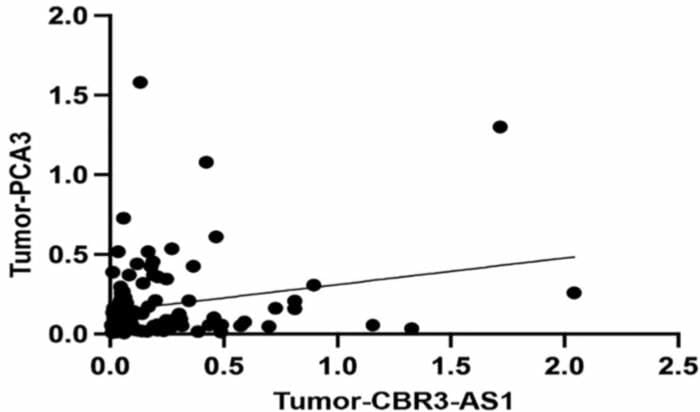Summary:
The study identifies lncRNAs CBR3-AS1 and PCA3 as significantly overexpressed in gastric cancer tissues, highlighting their potential as diagnostic biomarkers.
Takeaways:
- CBR3-AS1 and PCA3 are consistently overexpressed in gastric cancer compared to normal tissue.
- No significant link was found between their expression and clinical features like age or cancer stage.
- CBR3-AS1 shows promise as a diagnostic marker based on ROC curve analysis, warranting further validation.
A new research paper was published in Volume 16 of Genes & Cancer, titled “Evaluation of LncRNAs CBR3-AS1 and PCA3 expression in Gastric cancer and their correlation to clinicopathological variables.”
Researchers, led by first author Parisa Najari and corresponding author Reza Safaralizadeh from the University of Tabriz, investigated how two long non-coding RNAs (lncRNAs), CBR3-AS1 and PCA3, are expressed in gastric cancer (GC) tissues compared to nearby healthy tissues. They found that both lncRNAs were significantly overexpressed in tumor samples, suggesting their involvement in GC development. The findings support future use of these molecules as diagnostic biomarkers.
Gastric Cancer Is a Leading Cause of Cancer-Related Deaths
Gastric cancer remains one of the leading causes of cancer-related deaths worldwide, largely due to its late detection. Reliable early detection tools are critical to improving survival rates. To explore potential biomarkers, the researchers analyzed GC tumor and adjacent normal tissue samples from 100 patients. Both CBR3-AS1 and PCA3 showed consistently higher expression in cancerous tissues, indicating a possible role in tumor progression or as markers of disease.
The study also examined whether expression of these lncRNAs correlated with clinical features such as patient age, tumor size, cancer stage, or Helicobacter pylori infection. No statistically significant associations were found. However, the clear difference in expression between tumor and normal tissues supports their potential diagnostic value.
To assess this hypothesis further, the team conducted receiver operating characteristic (ROC) curve analysis. The results showed that CBR3-AS1, in particular, could serve as a reasonably accurate biomarker for distinguishing GC tissues.
LncRNAs Help Regulate Gene Activity
LncRNAs are RNA molecules that do not code for proteins but help regulate gene activity. Because of their stability and regulatory functions, they are gaining attention as tools for cancer diagnosis and treatment. CBR3-AS1 has been linked to tumor growth and drug resistance in other cancers, while PCA3 is already FDA-approved as a diagnostic marker for prostate cancer, further supporting its relevance.
While the results are promising, the authors note that the study was conducted at a single center and did not explore how these molecules influence cancer progression. Larger, multi-center studies and additional validation will be essential to confirm their clinical utility.
In summary, CBR3-AS1 and PCA3 emerge as promising molecular markers for GC. With further validation, these lncRNAs could support earlier diagnosis and help advance more personalized and effective treatment strategies.
Featured Image: Correlations between the expression levels of CBR3-AS1 and PCA3 in GC patients (r = 0.1777, P-value = 0.0769). Image: Copyright: © 2025 Najari et al.





